STALINGRAD
Day by Day
Jason Turner
This edition published in 2012 by
Pen & Sword Military
An imprint of
Pen & Sword Books Ltd
47 Church Street
Barnsley
South Yorkshire
S70 2AS
Copyright 2012 Brown Bear Books Ltd
All rights reserved. No part of this publication may be reproduced, stored in a retrieval system, or transmitted,
in any form or by any means without the prior written permission of the publisher, nor to be otherwise circulated
in any form of binding or cover other than that in which it is published and without a similar condition
being imposed on the subsequent purchaser.
ISBN: 9781848848580
Produced by
Windmill Books Ltd
First Floor
917 St.Albans Place
London N1 ONX
In the preparation of this book extensive use has been made of U.S. Department of Defense
analyses of both German and Russian planning, logistics and combat methods on the Eastern Front.
This material is probably the best ever assembled and was based on long, in-depth interviews
with German officers and men who fought at Stalingrad and who had to make command decisions
during the battle. These excellent descriptions are supplemented by interviews with veterans and
other first-hand accounts of the Stalingrad campaign in 194243.
Project Editor: Peter Darman
Designer: Jerry Udall
Index: Indexing Specialists (UK) Ltd
Editorial Director: Lindsey Lowe
Printed in Indonesia
Pages 23: Red Army soldiers in Stalingrad in January 1943.
Pen & Sword Books Ltd incorporates the imprints of Pen & Sword Aviation,
Pen & Sword Family History, Pen & Sword Maritime, Pen & Sword Military, Wharncliffe Local History,
Pen & Sword Select, Pen & Sword Military Classics,
Leo Cooper, Remember When, The Praetorian Press, Seaforth Publishing and Frontline Publishing
For a complete list of Pen & Sword titles please contact
PEN & SWORD BOOKS LIMITED
47 Church Street, Barnsley, South Yorkshire, S70 2AS, England
E-mail: enquiries@pen-and-sword.co.uk
Website: www.pen-and-sword.co.uk
Contents
| Military units types | Military units size |
 Infantry Infantry |  German German |
 Armored Armored |  Russian Russian |
 Mechanized/Panzergrenadier Mechanized/Panzergrenadier |  Romanian Romanian |
 Cavalry Cavalry |  Italian Italian |
 Hungarian Hungarian |
| Military unit colours | Geographical symbols |
 ArmyGroup ArmyGroup |  urban area urban area |
 Army Army |  town/city location town/city location |
 Corps Corps |  mountain mountain |
 Division Division |  river river |
 Brigade Brigade |  railway railway |
T he Battle of Stalingrad had its roots in the failure of Operation Barbarossa, the German invasion of the Soviet Union in June 1941. In Barbarossa, Axis forces, despite achieving some of the most spectacular tactical victories in the history of warfare, failed to achieve a decisive strategic victory over the Soviet Union. During the 166-day period between June and December 1941, the Germans advanced up to 1290km (802 miles) on a 1600km (995-mile) front and inflicted 4.3 million casualties on the Red Army, destroying the entire Soviet ground forces in the western Soviet Union 1.3 times over! Despite these achievements, in mid-December 1941 the German Army faced a Red Army more powerful than it had been when Barbarossa commenced. A subsequent Soviet counteroffensive was checked by a dogged German defence in March 1942. Then, the spring thaws and ensuing mud halted all movement. This stalemate on the Eastern Front would last for two months, until May 1942.
As the new year dawned, Adolf Hitler was faced with the unpleasant truth that the German Army would never recover from the horrendous losses of the 1941 campaign. By April 1942, the army had lost one-third of the troops, 40 percent of the anti-tank guns, half the horses and 79 percent of the armor that had begun the campaign the previous year. Massive vehicle losses had significantly reduced mobility, while munitions stocks had fallen to one-third of June 1941 levels. New production and replacements could not offset losses, and as a result infantry, officer, and equipment strengths plummeted.
The German High Command recognized that in the spring of 1942 the German Army was simply too weak to mount a general offensive along the whole of the Eastern Front. Adolf Hitler, now in direct personal command of the German armies, decided that his forces would stand on the defensive in the centre and north, while in the south they would attack to capture the oil of the Caucasus region. However, he was unsure whether the army should capture Stalingrad on the Volga to prevent the movement of oil north or drive into the Caucasus to capture the oil fields themselves. This indecision would continue throughout the campaign. Against a Red Army that was growing in strength, the 1942 summer offensive, codenamed Operation Blue, represented Nazi Germanys last chance of militarily defeating the Soviet Union. But it was the Germans who would be defeated, in the shell-blasted city of Stalingrad.
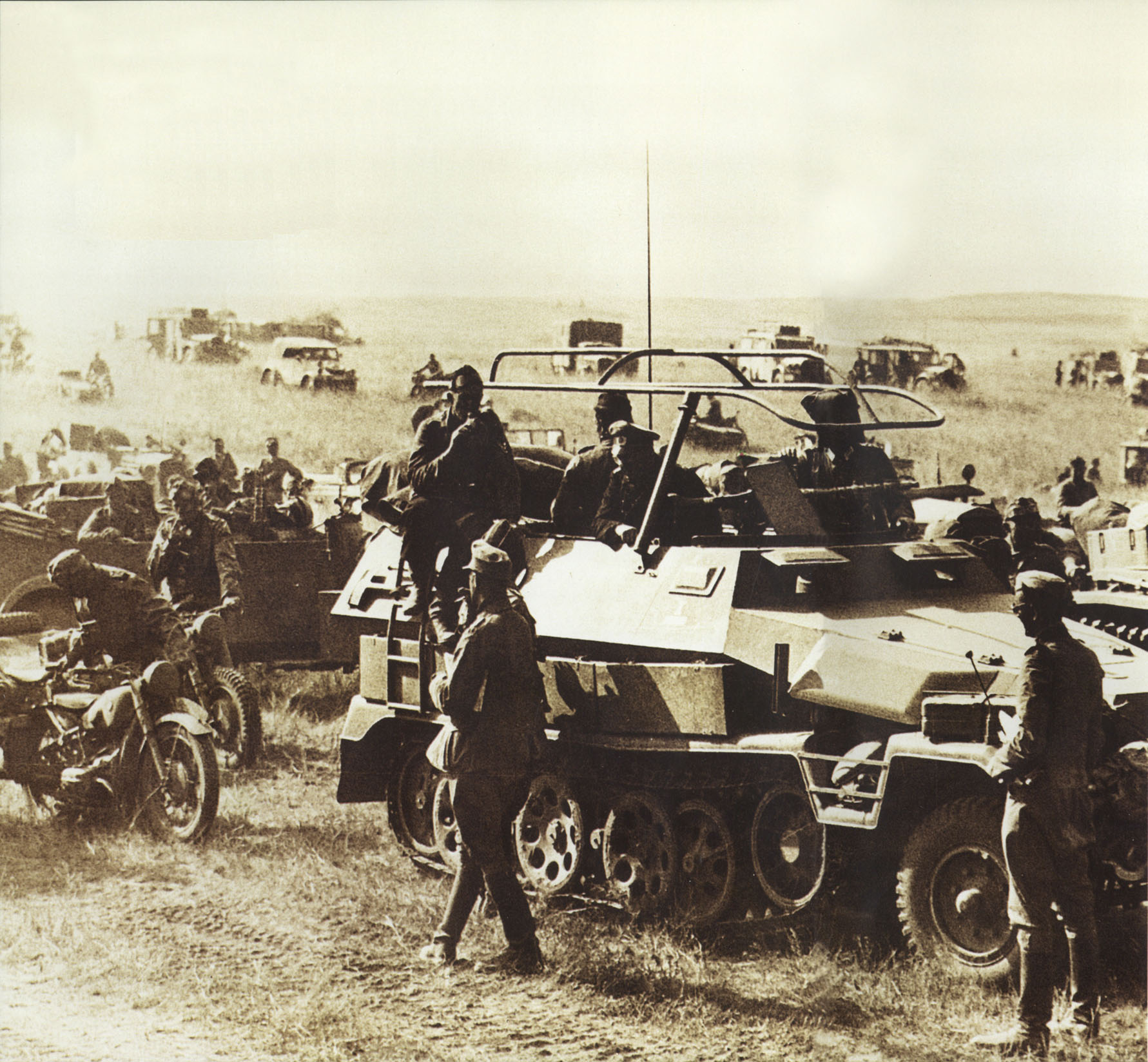
German reinforcements arrive on the Eastern Front in the spring of 1942, ready to participate in Operation Blue, the Wehrmachts summer offensive into the Caucasus.

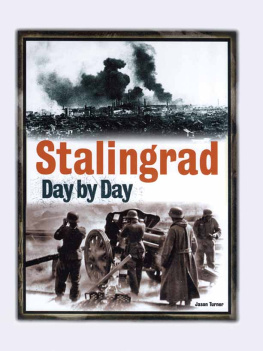


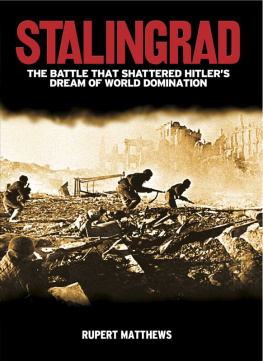



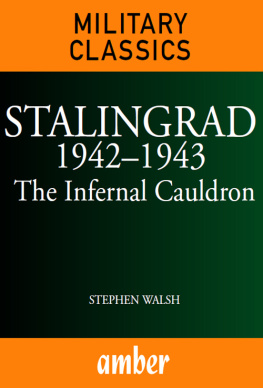
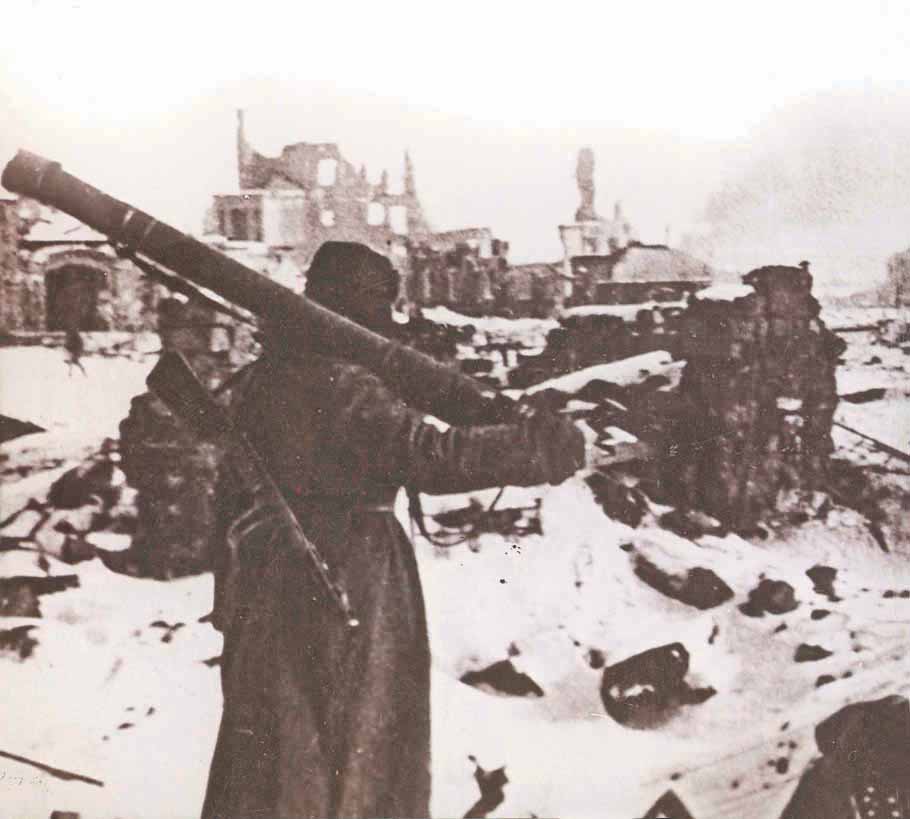
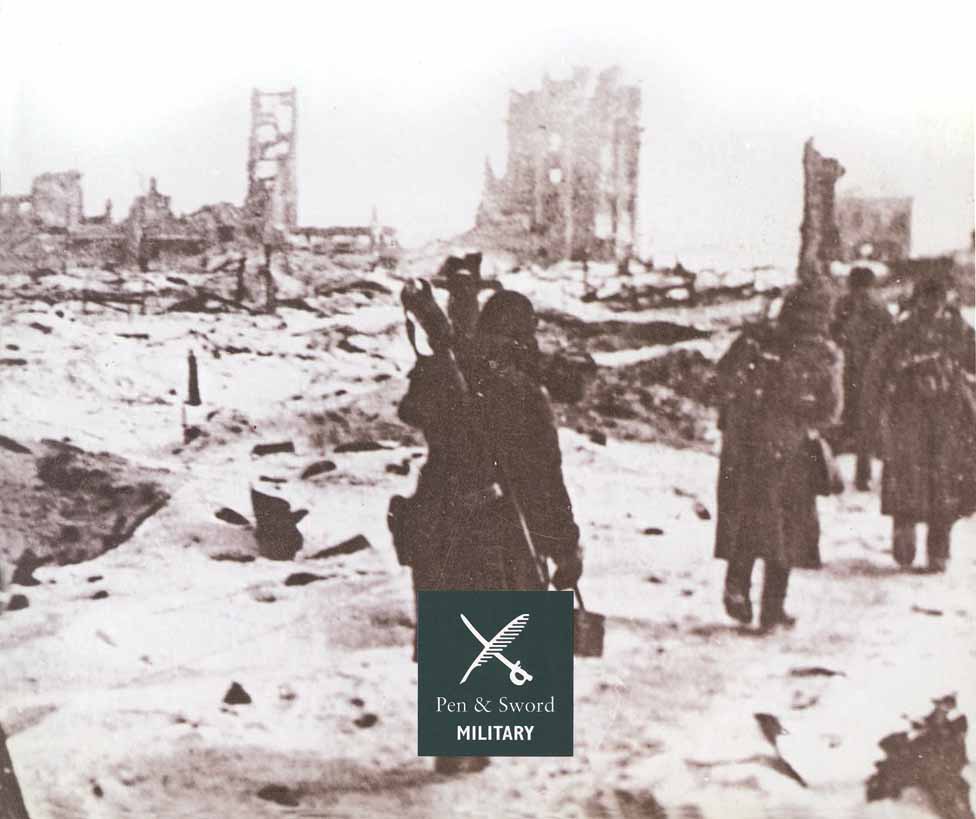
 Infantry
Infantry German
German Armored
Armored Russian
Russian Mechanized/Panzergrenadier
Mechanized/Panzergrenadier Romanian
Romanian Cavalry
Cavalry Italian
Italian Hungarian
Hungarian ArmyGroup
ArmyGroup urban area
urban area Army
Army town/city location
town/city location Corps
Corps mountain
mountain Division
Division river
river Brigade
Brigade railway
railway